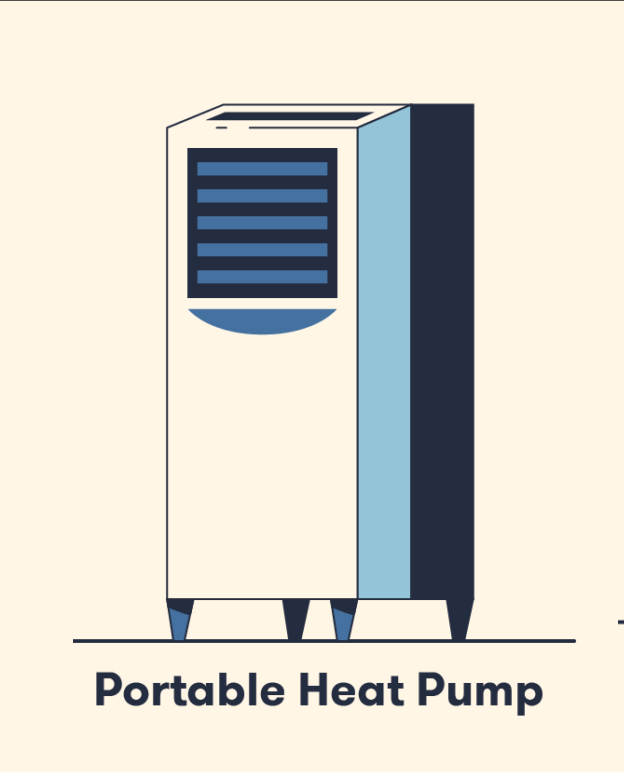HVAC DESIGN & FACILITIES
HVAC Systems and Designs
“HVAC” is an acronym for heating, ventilation, and air conditioning, encompassing any system designed to provide temperature control and ventilation in a given space. These systems range from central heating and cooling systems to portable heaters and air conditioners, offering various options to choose from.
HVAC systems typically fall into one of two categories: ducted or ductless. In a ducted system, a central unit pushes air through a network of air ducts to regulate the temperature within a building. In contrast, ductless systems do not rely on air ducts; instead, they utilize alternative methods to distribute conditioned air throughout the space.
To assist you in determining the most suitable heating or cooling system for your house, apartment, building, or office, we will discuss the most common types of HVAC systems and elucidate how each one functions.
Types of Ducted HVAC Systems
A building that utilizes vents to circulate both warm and cold air is typically outfitted with a ducted HVAC system. Ducted HVAC systems are commonplace in residential and commercial structures and encompass any heating or cooling system that disperses conditioned air via a network of air ducts.
1. Split System
2. Hybrid Split System
3. Packaged Heating and Cooling
4. Zoned System

Split System
Heating and cooling split systems represent the most prevalent type of HVAC systems employed in residential structures. These systems comprise two distinct components, one dedicated to heating and the other to cooling, and employ a conventional thermostat to regulate the temperature throughout the entire building.
In the majority of buildings equipped with split systems, the heating unit is situated in a basement, utility closet, or another interior storage space. This heating system operates on natural gas and utilizes either an evaporator or a fan to distribute heat through the building’s ductwork. Conversely, the cooling system is located outdoors and connects to the building’s ductwork via a series of tubing. It relies on compressors, coils, and refrigerant to produce cool air, while a fan facilitates the expulsion of hot air away from the building.
Notable Feature: A single thermostat governs the temperature for the entire system.
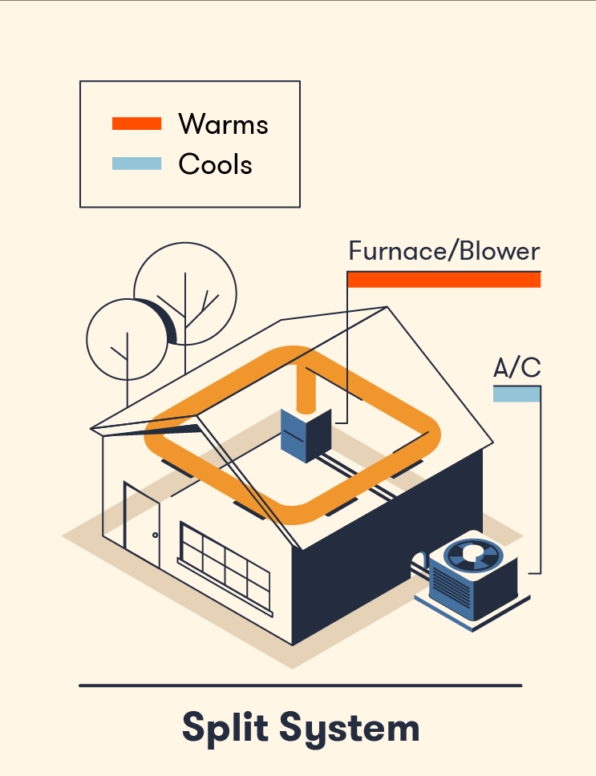
Hybrid Split System
A hybrid split HVAC system shares the same structure and cooling unit as a standard split system but offers flexibility in its heating method. While the heater in this system can utilize gas, it also has the capability to switch to electric power. Electric heating is often slower and less potent than gas heating, but this dual option grants building owners greater control over their energy consumption and can lead to reduced energy expenses, especially in milder climates.
Prominent Feature: Decreases energy consumption.
In most buildings equipped with split systems, the heating unit is typically situated in a basement, utility closet, or another interior storage area. This gas-powered heater employs either an evaporator or fan to distribute heat through the building’s ductwork. Meanwhile, the cooling system is located outside and connects to the building’s ductwork through a series of tubing. It utilizes compressors, coils, and refrigerant to generate cool air, with a fan directing hot air away from the building.
Notable Feature: The system is regulated by a single thermostat that governs the temperature for the entire unit.
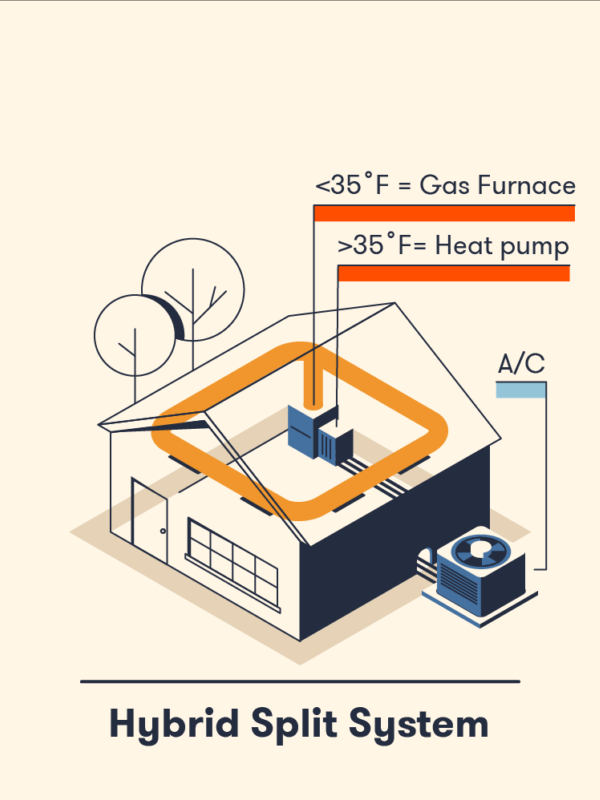
Packaged Heating and Cooling
A hybrid split HVAC system shares the same structure and cooling unit as a standard split system but offers flexibility in its heating method. While the heater in this system can utilize gas, it also has the capability to switch to electric power. Electric heating is often slower and less potent than gas heating, but this dual option grants building owners greater control over their energy consumption and can lead to reduced energy expenses, especially in milder climates.
Prominent Feature: Decreases energy consumption.
In most buildings equipped with split systems, the heating unit is typically situated in a basement, utility closet, or another interior storage area. This gas-powered heater employs either an evaporator or fan to distribute heat through the building’s ductwork. Meanwhile, the cooling system is located outside and connects to the building’s ductwork through a series of tubing. It utilizes compressors, coils, and refrigerant to generate cool air, with a fan directing hot air away from the building.
Notable Feature: The system is regulated by a single thermostat that governs the temperature for the entire unit.
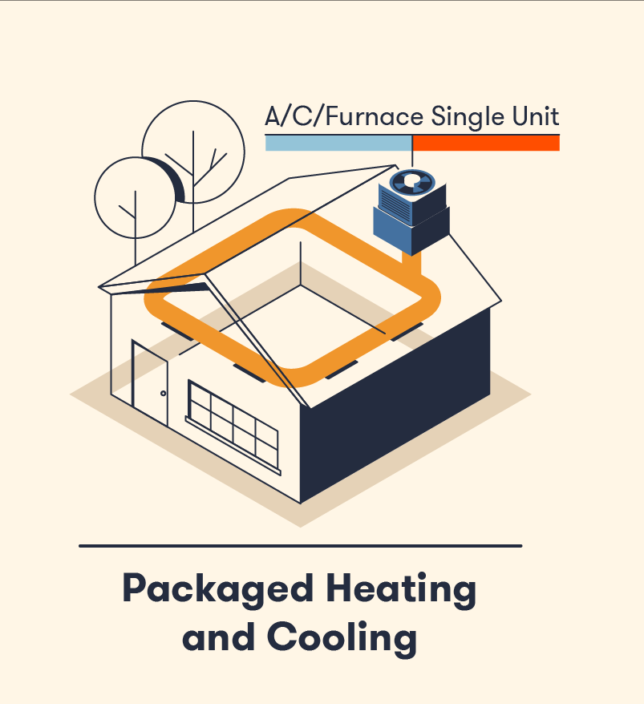
Zoned System
HVAC zoning systems provide occupants with enhanced control over the temperature in distinct rooms or sections of a building. Technicians can implement zoning in ducted HVAC systems through various methods, with the choice often dependent on the building’s size. For instance, individuals with larger residences may opt for the installation of multiple HVAC systems to regulate temperatures on different floors. Since each system operates independently, this zoning approach necessitates the installation of two or more heating and cooling units.
Another prevalent zoning method involves the installation of manual or automatic dampers within the air ducts of the system, enabling control over airflow to various areas. By partially closing a damper, airflow can be restricted to one zone while directing it toward another, facilitating precise adjustments to attain the desired temperature in each room. This form of zoning enhances comfort for occupants and boosts energy efficiency by redirecting air away from zones that do not require it.
Noteworthy Feature: Enables customized temperature control for enhanced comfort and energy efficiency.
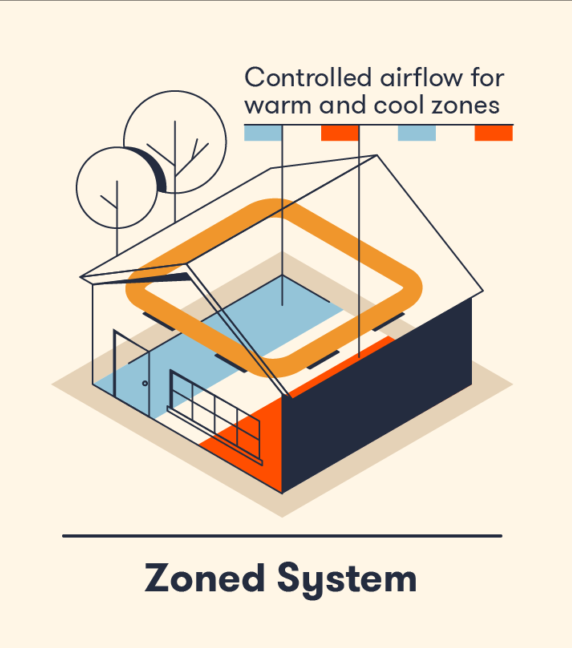
Types of Ductless HVAC Systems
5. Duct-Free Mini-Split
6. Hydronic Heating
7. Portable Spot Cooler
8. Portable Heat Pump
Duct-Free Mini-Split
Ductless mini-split systems, also known as mini-split systems, are frequently installed in individual rooms and are commonly found in multifamily homes, office buildings, and hotel rooms. These electric units consist of several components, including an outdoor compressor and condenser, refrigerant, an indoor air-handling unit, a heat pump, power cables, and a thermostat for each zone. Copper tubing serves to connect the indoor and outdoor components, and a single compressor can link to as many as nine indoor air-handling units.
Although the installation of ductless systems can involve a significant upfront cost, they often yield long-term benefits by reducing energy expenses and consumption. Their adaptable zoning capabilities enable users to heat and cool only the occupied rooms, preventing energy wastage associated with traditional ductwork systems. However, it’s important to note that the heating functionality of these systems may be less effective in extremely cold climates, necessitating the use of a separate heating system in colder regions.
Notable Feature: Offers individualized temperature control without the need for ducts, enhancing energy efficiency.
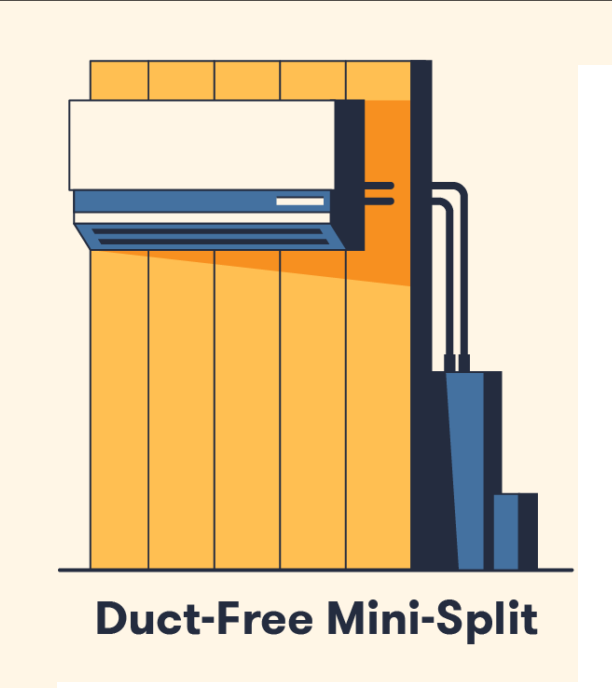
Hydronic Heating
In contrast to the other HVAC systems mentioned, hydronic heating relies on a liquid, rather than air, to emit warmth. This system employs a boiler to heat water and subsequently circulates it through a network of pipes installed beneath the floors of a building. When the heated liquid reaches a radiator or baseboard heater, it disperses heat throughout the room. Alternatively, homeowners can opt for a radiant flooring system that utilizes hydronic heating to warm their floors.
Prominent Feature: Utilizes liquid for heat radiation.
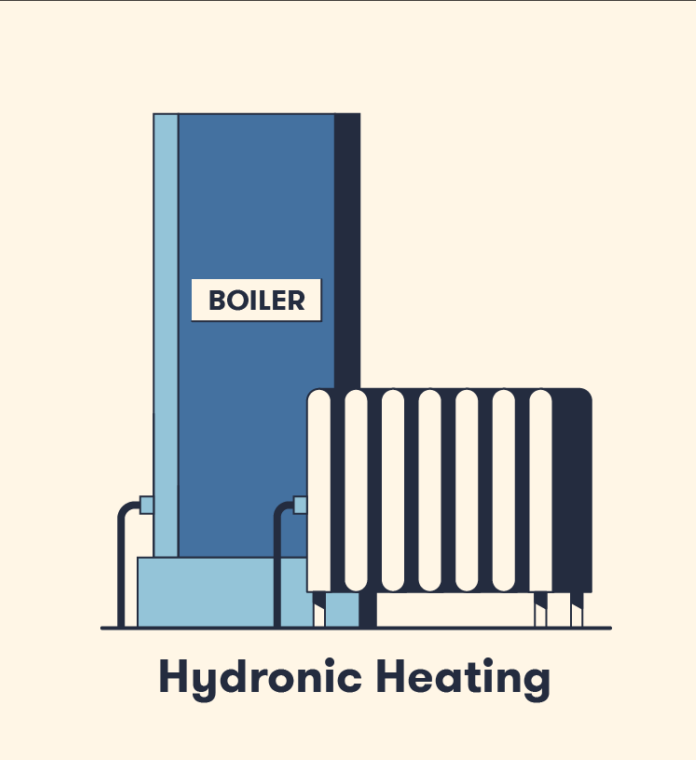
Portable Spot Cooler
Spot coolers are portable air conditioning units designed to cool large rooms, manufacturing facilities, or outdoor areas. They function by drawing in the surrounding air, passing it over a closed-loop coil that’s cooled by refrigerant, and then releasing it back into the space. This process results in the coil cooling the air while simultaneously removing moisture, leading to the generation of condensation that is drained out through a hose or collected in a catch bucket.
Spot coolers are versatile and can be used in any location with access to an electrical power source. They are equipped with wheels for easy mobility. However, setting them up in enclosed spaces can be more challenging due to the need to find an outlet for the exhaust. After cooling the air, spot coolers expel the remaining warm air through a flexible exhaust tube, which is typically extendable. This tube must be directed outside through a door, window, or drop ceiling to prevent the warm air from re-entering the space.
Noteworthy Feature: Portability and straightforward setup.
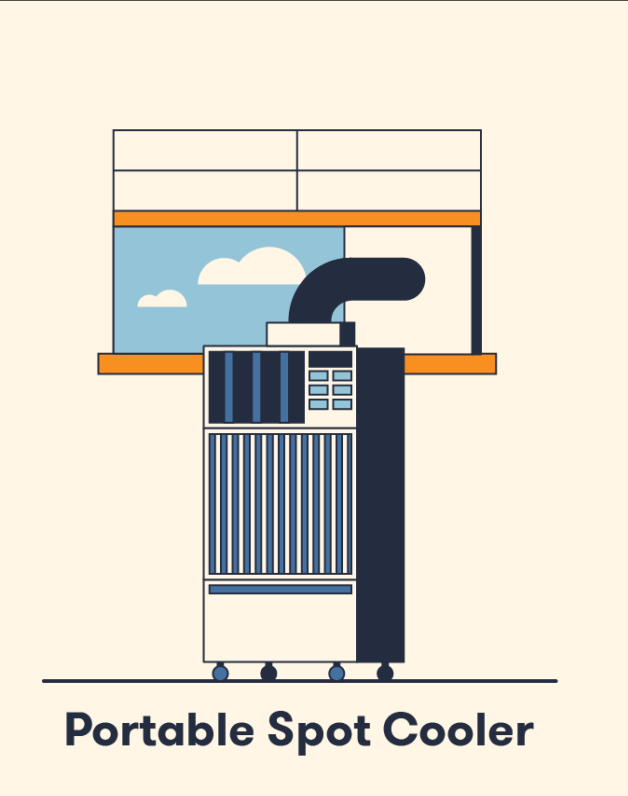
Portable Heat Pump
A Portable Heat Pump shares a similar size and operational concept with a spot cooler but offers an added heating function for use in colder environments. When switched to heating mode, a heat pump draws in outdoor air, passes it over a condenser coil, and then distributes warm air throughout the room. This versatility is made possible by a reversing valve inside the unit, which allows users to toggle between heating and cooling functions, making it an excellent choice for locations with fluctuating climates.
Key Feature: Offers both heating and cooling capabilities.
Whether you are in the process of installing a new HVAC system or require a temporary temperature control solution for your job site, there’s an HVAC system suited to your needs. If you’re uncertain about which type of HVAC system to choose from the options mentioned above, our team of HVAC specialists at Xelor Air & Heat is ready to assist you in finding the most suitable option for your building.
